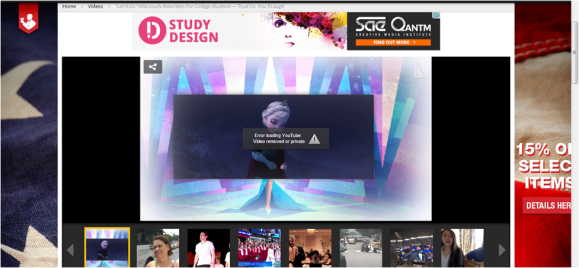Dear Apple,
I tried contacting you earlier via your social responsibility page on your website. It has been two months since I contacted you and am still waiting for a reply.
I was one of some 800,000 Australian viewers that watched BBC Panorama’s Apple’s Broken Promises aired on ABC’s Four Corners. [1] In your statement to the ABC, you state you are “deeply offended’ regarding not only the negative portrayal of your company but also the ABC’s choice to broadcast this documentary. [2]
I took on your suggestion to read the information about your supplier responsibility commitment on your website. Your policies demonstrate a strong commitment to worker’s rights but are these policies really carried out in practice?
For instance, your website boasts about Apple’s commitment to preventing excessive work hours and to work overtime is a voluntary option for workers.[3] As you are aware in the BBC’s secret filming they show that workers were required to say yes to overtime work , as a prerequisite to being employed at your contractor, Pegatron.[4] Is this really a true reflection of a commitment to reducing excessive work hours?
Even if workers do only work the maximum of 60 hours a week, on a 5 day working week that’s 12 hour shift! Plus overtime could equal a 15-18 hour day. [5] For a comparison in Australia a standard manufacturing employees working hours are 38 hours per week. [6] That’s a 22 hour difference between standards for China and standards for Australia.
As technology blogger, Barry Collins points out no technology company would have a perfect human rights record.[7] I understand that to have documentaries such as ‘Apple’s Broken Promises’ expose to the world issues in your supply chain is not positive news coverage. However, on what bases do you label the findings as “irresponsible”? [8]
As a company that has publicly stated that they are committed to improving worker’s conditions you should be thankful that BBC’s independent investigations have brought issues to your attention.
I don’t understand how this is irresponsible and misleading journalism.
Apple, as the world’s most admired company according to Forbes Magazine[9], surely you are up to the challenge to improving the working conditions of your production line staff?
After all Happier workers are more productive workers which means more profits for you. [10] So it’s in your workers’ and companies best interests. If you would like to contact me feel free to leave a comment below.
Sincerely ,
Farishte
Media and Communications Student
Wollongong, Australia
[1] Tv Tonight, 2015, Monday 2nd March , Timeshifted, viewed 1 May 2015 <http://www.tvtonight.com.au/2015/03/timeshifted-monday-2-march-2015.html> [2] Apple Inc, 2015, Statement, ABC Four Corners, viewed 28 April, 2015 <http://www.abc.net.au/reslib/201503/r1394995_19864551.pdfLink> [3]Apple, 2015, Labor and Human Rights Highlights from our 2015 Report, Apple Inc, viewed 25 April, 2015, <http://www.apple.com/supplier-responsibility/labor-and-human-rights/> [4] BBC Panorama, 2015, Apple’s Broken Promises, (Documentary) , 2nd March, ABC Four Corners viewed 2 March 2105 <http://www.abc.net.au/4corners/stories/2015/03/02/4187424.htmto> [5] BBC Panorama, 2015, Apple’s Broken Promises, (Documentary) , 2nd March, ABC Four Corners viewed 2 March 2105 <http://www.abc.net.au/4corners/stories/2015/03/02/4187424.htmto> [6] Fair Work Australia, 2015, Manufacturing Award – Hours of Work, Fair Work Ombudsman, viewed 2 May 2015 <http://www.fairwork.gov.au/employee-entitlements/hours-of-work-breaks-and-rosters/hours-of-work> [7] Collins B, 2015, Bad Apple or the best of the bad bunch? Sad reality about Apple Broken Promises from BBC Panorama, PCPRO <19 December 2014 <http://www.pcpro.co.uk/smartphones/1000196/bad-apple-or-the-best-of-a-bad-bunch-the-sad-reality-about-apples-broken> [8] Apple Inc, 2015, Statement, ABC Four Corners, viewed 28 April, 2015 <http://www.abc.net.au/reslib/201503/r1394995_19864551.pdfLink> [9] Fortune 100, 2014, Number 1 Apple, Fortune Magazine, viewed 28 April, 2015 <http://fortune.com/worlds-most-admired-companies/2014/ [10] Oswald A , Proto Eugenio and Sgro D, 2014, ‘Happiness and Productivity’ viewed 28 April 2014, <http://www2.warwick.ac.uk/fac/soc/economics/staff/eproto/workingpapers/happinessproductivity.pdf>





